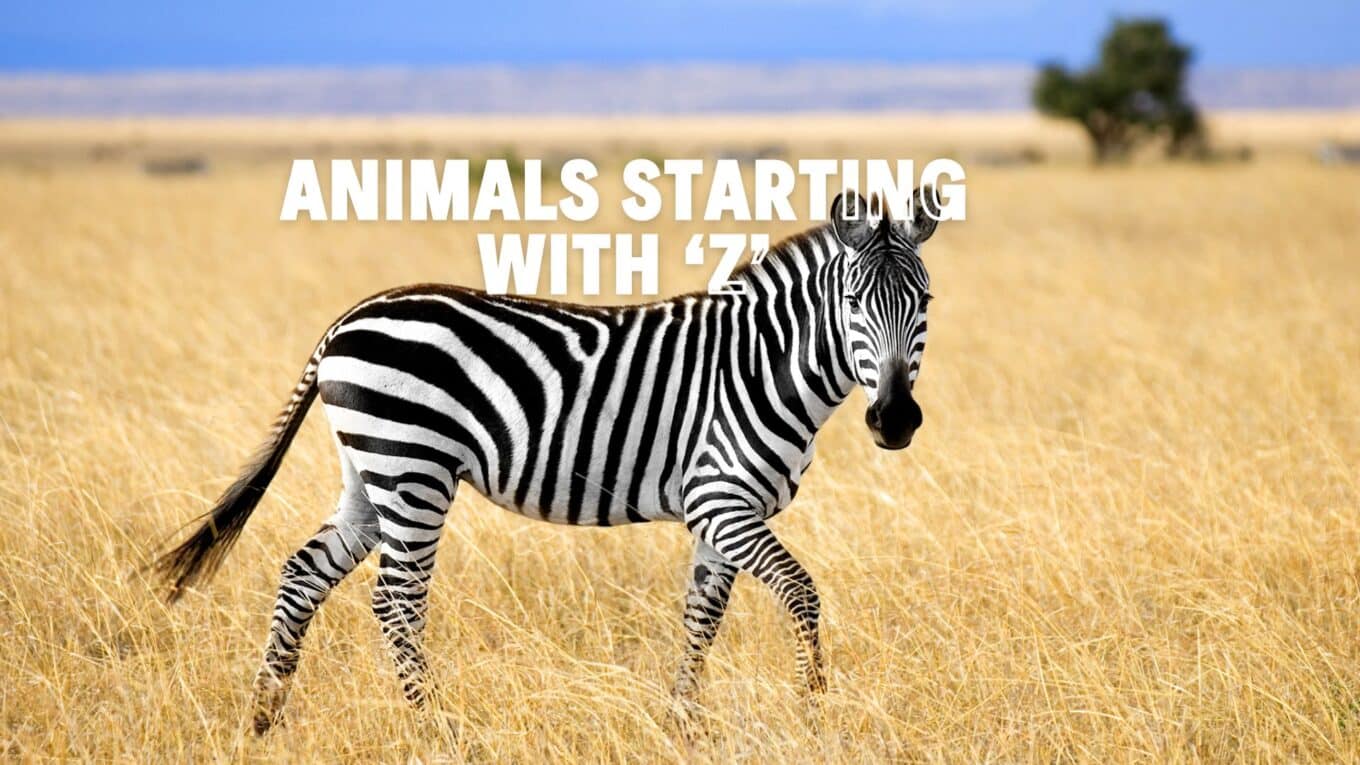Animals starting with Z? You might think there aren’t many. But get ready to be surprised! From tiny insects to big mammals, the animal kingdom has some hidden gems whose names begin with this final letter.
Have you ever wondered about zebras beyond their stripes? Or of the zebu? These animals that start with Z are more than just zoo oddities. They play key roles in their ecosystems and have some truly mesmerizing traits.
Want to impress your friends with animal facts? Or learn more about nature’s wonders? This list of 40 animals that start with Z will open your eyes to a world you may not have known existed.
Are you ready to explore these unique creatures? Let’s jump in and meet some amazing animals that start with Z!
40 Animals that Start with The Alphabet ‘Z’
1. Zebra
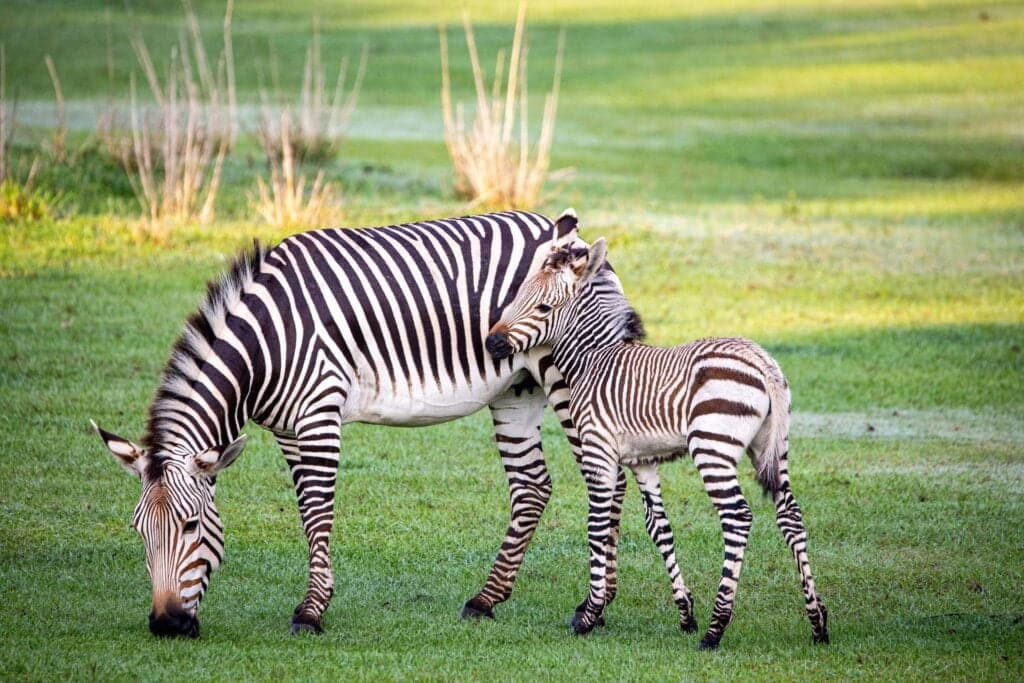
The zebra is a striking mammal known for its black and white stripes. Each zebra has a unique stripe pattern, making them easily identifiable.
Zebras stand about 4 to 5 feet tall at the shoulder and weigh between 440 to 990 pounds. They have a strong, muscular build and are well-adapted to their grassland habitats.
- Region of Habitat: Africa
- Scientific Name: Equus zebra, Equus quagga, Equus grevyi
- Place of Origin: Africa
- Feeding Habits: Herbivore, primarily grass
- What Sound They Make: Barking, braying
Fun Facts: Zebras’ stripes serve not only as camouflage but also as a natural fly repellent. Contrary to popular belief, zebras are black with white stripes, not vice versa.
Their social structure is mesmerizing, often forming harems led by a dominant stallion.
2. Zebra Finch

The zebra finch is a small, colorful bird with a gray body and white and black stripes on its face and tail. It measures around 4 inches in length and weighs about 0.5 ounces.
Zebra finches are popular in the wild and in confinement due to their bright colors and pleasant songs.
- Region of Habitat: Australia
- Scientific Name: Taeniopygia guttata
- Place of Origin: Southern Pacific region
- Feeding Habits: Omnivore, seeds, insects
- What Sound They Make: Chirping, singing
Fun Facts: Male zebra finches are known for their ability to create unique songs, often inspired by their surroundings or learned from their parents.
3. Zebra Mussels

Zebra mussels are small freshwater mollusks that resemble tiny clams. They typically measure up to one inch in length and have a distinct pattern of dark and light stripes on their shells.
Zebra mussels are known for their ability to attach themselves to various surfaces.
- Region of Habitat: Freshwater lakes and rivers in Europe and North America
- Scientific Name: Dreissena polymorpha
- Place of Origin: Eurasia
- Feeding Habits: Filter feeders, primarily plankton
- What Sound They Make: None
Fun Facts: Zebra mussels are considered an invasive species in many regions due to their rapid reproduction and ability to clog water intake pipes.
A single female can produce up to one million eggs annually, spreading their presence in freshwater ecosystems.
4. Zebra Pleco

The zebra pleco is a small freshwater catfish, easily recognized by the black and white stripes covering its body.
It typically grows to about 3 inches in length and has a sucker mouth, which it uses to feed on the bottom of rivers and aquariums.
- Region of Habitat: Amazon River, Brazil
- Scientific Name: Hypancistrus zebra
- Place of Origin: Brazil
- Feeding Habits: Omnivores, algae, and small invertebrates
- What Sound They Make: None
Fun Facts: The zebra pleco is highly sought after in the aquarium trade due to its unique appearance and calm temperament.
Despite its popularity, it remains relatively rare in the wild, making it a prized possession for many aquarists.
5. Zebra Shark

The zebra shark is a large, nocturnal species known for its distinct stripes during its juvenile stage.
As it matures, these stripes transform into spots. Zebra sharks can grow up to 8 feet long and weigh around 50 pounds.
- Region of Habitat: Indo-Pacific Ocean
- Scientific Name: Stegostoma fasciatum
- Place of Origin: Indo-Pacific region
- Feeding Habits: Carnivore, small fish, and invertebrates
- What Sound They Make: None
Fun Facts: Despite their fearsome appearance, zebra sharks are generally harmless to humans and are often found resting on the ocean floor during the day.
Their ability to squeeze into small crevices allows them to hunt for prey effectively in coral reefs.
6. Zuniceratops
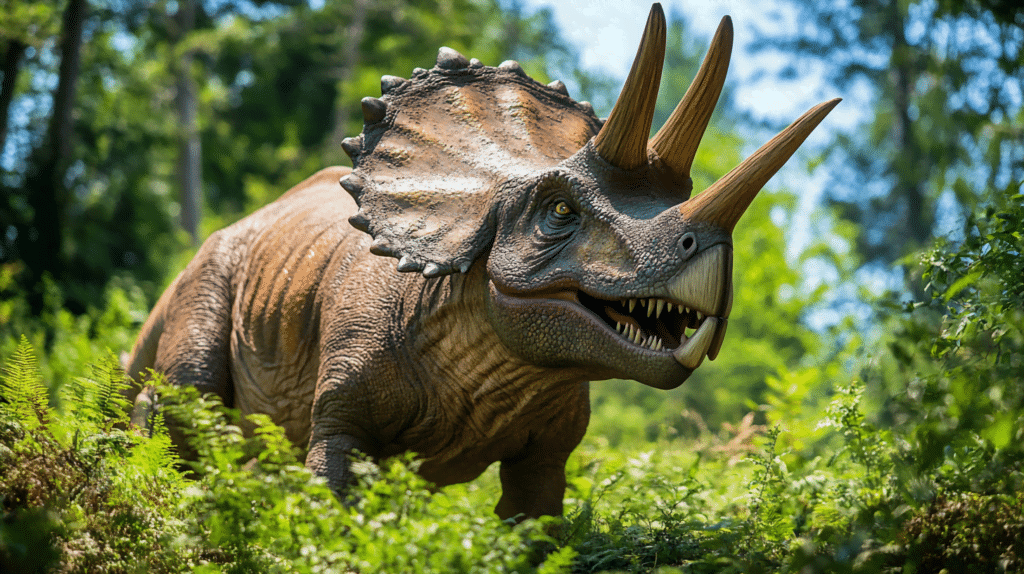
Zuniceratops was a small ceratopsian dinosaur that lived during the Late Cretaceous period. It was about 10 to 12 feet long and weighed around 400 pounds.
It had a beaked mouth, frill, and two brow horns, similar to its later relative, Triceratops.
- Region of Habitat: North America (Fossil records)
- Scientific Name: Zuniceratops christopheri
- Place of Origin: Late Cretaceous, North America
- Feeding Habits: Herbivore, primarily fed on vegetation
- What Sound They Make: Unknown, likely low grunts or calls
Fun Facts: Zuniceratops is notable for being one of the earliest known ceratopsians with brow horns, indicating an evolutionary transition to the more well-known Triceratops.
It was found in New Mexico, and its name reflects the Zuni tribe native to the area.
7. Zebra Spitting Cobra

The zebra-spitting cobra is a snake species known for its ability to spit venom at threats. It has a distinctive black-and-white striped pattern and can reach lengths up to 5 feet.
- Region of Habitat: Southern Africa
- Scientific Name: Naja nigricincta
- Place of Origin: Africa
- Feeding Habits: Carnivore, small mammals, and birds
- What Sound They Make: Hissing
Fun Facts: This cobra’s unique defense mechanism involves spitting venom at the eyes of predators or threats. The venom, while not lethal if it does not enter the bloodstream, can cause intense pain and temporary or permanent blindness.
8. Zebra Tarantula
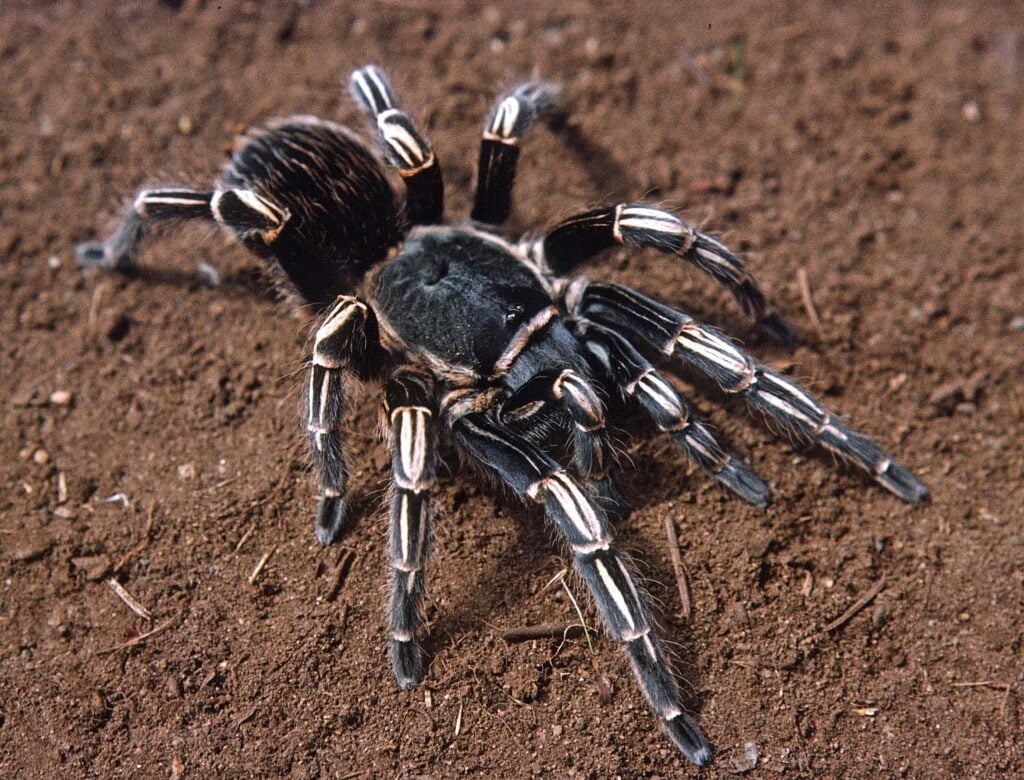
The zebra tarantula is a medium-sized spider species with black legs adorned with white stripes. It typically grows to about 4 inches in body length and is known for its reclusive nature, often staying hidden in burrows.
- Region of Habitat: Central America
- Scientific Name: Aphonopelma seemanni
- Place of Origin: Central America
- Feeding Habits: Carnivore, insects, and small invertebrates
- What Sound They Make: None
Fun Facts: Zebra tarantulas are popular pets among spider enthusiasts due to their striking appearance. They are also known for their long lifespans, with some living up to 20 years in captivity.
9. Zebrafish
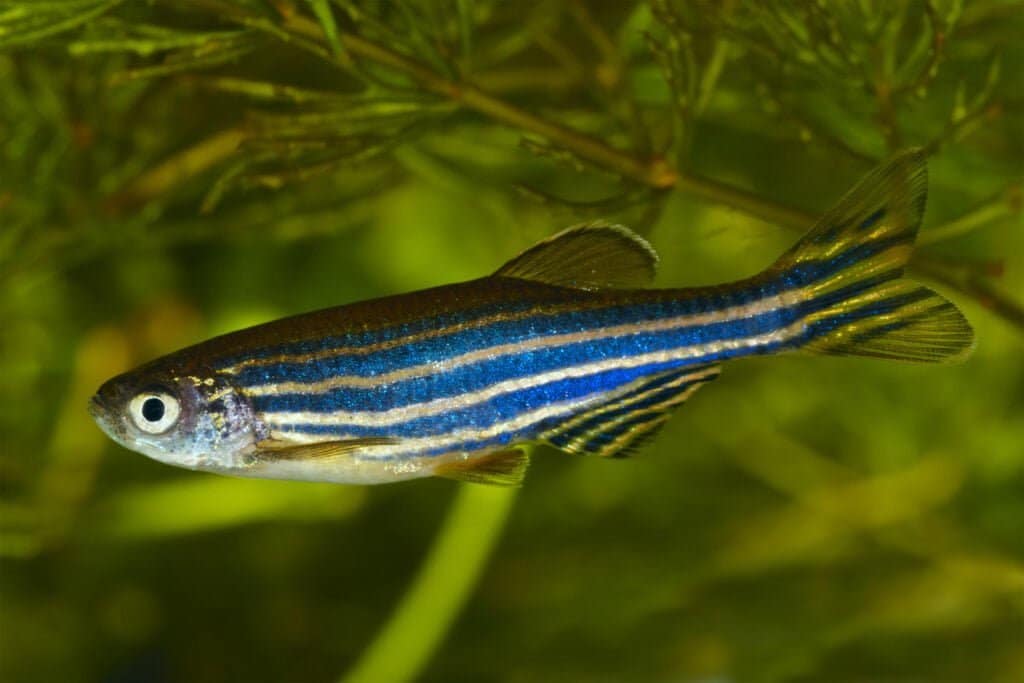
The zebrafish is a small freshwater fish species with a slender body and horizontal black and white stripes running from head to tail. It typically measures around 2.5 inches and is popular for home aquariums.
- Region of Habitat: Rivers in South Asia
- Scientific Name: Danio rerio
- Place of Origin: South Asia
- Feeding Habits: Omnivore, small crustaceans, insects, and algae
- What Sound They Make: None
Fun Facts: Zebrafish are extensively used in scientific research due to their transparent embryos and rapid development, making them ideal for studying genetics and developmental biology.
10. Zebu
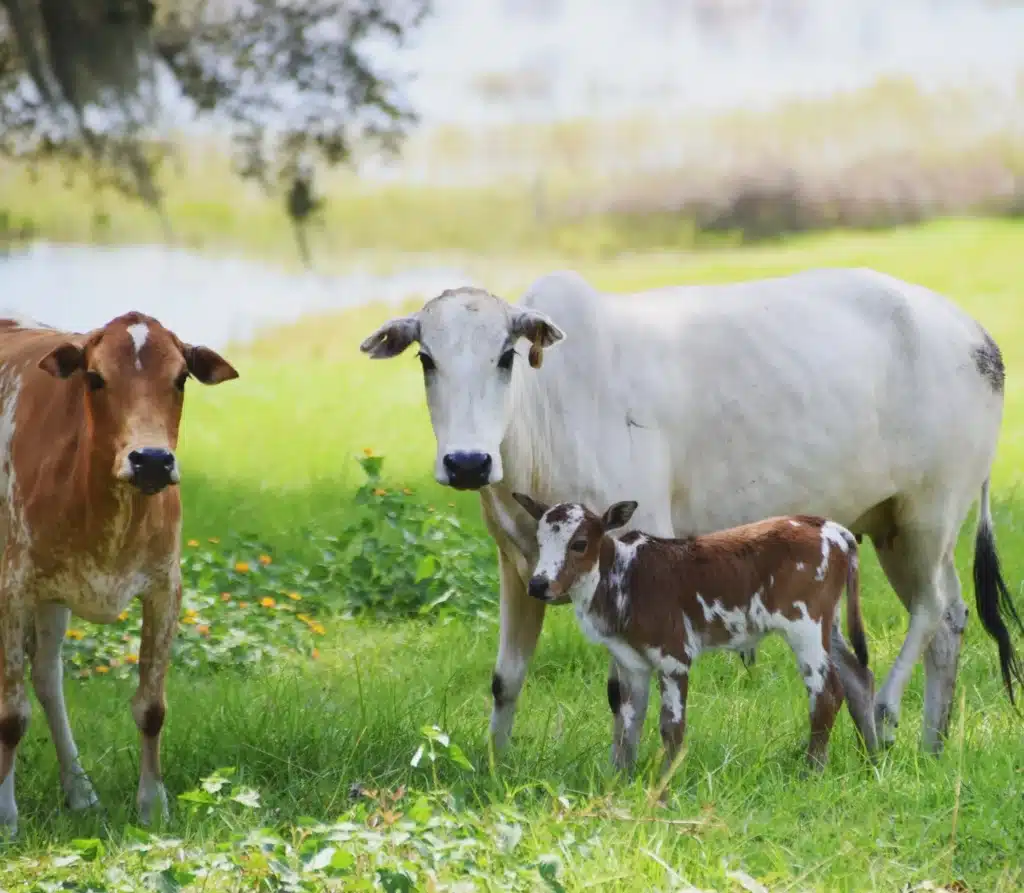
The zebu is a domesticated cattle species with a prominent hump on its shoulders and large, drooping ears. They can weigh 600 to 1,000 pounds and stand about 4 to 5 feet tall at the shoulder.
- Region of Habitat: Indian subcontinent and Africa
- Scientific Name: Bos taurus indicus
- Place of Origin: Indian subcontinent
- Feeding Habits: Herbivore, grass, and foliage
- What Sound They Make: Mooing
Fun Facts: Zebus are revered in Hindu culture and are often seen as sacred animals. They are well-adapted to hot climates, making them invaluable as draft animals and for their milk in tropical regions.
11. Zokor

Zokors are subterranean rodents resembling moles. They have a cylindrical body, short limbs, and tiny eyes. They typically grow to about 6 to 8 inches long and have strong claws adapted for digging.
- Region of Habitat: Northern Asia
- Scientific Name: Myospalax
- Place of Origin: Asia
- Feeding Habits: Herbivore, roots, and tubers
- What Sound They Make: None
Fun Facts: Zokors are expert diggers who create extensive tunnel systems underground. Their underground lifestyle allows them to avoid predators, and they adapt well to their environment.
12. Zonkey
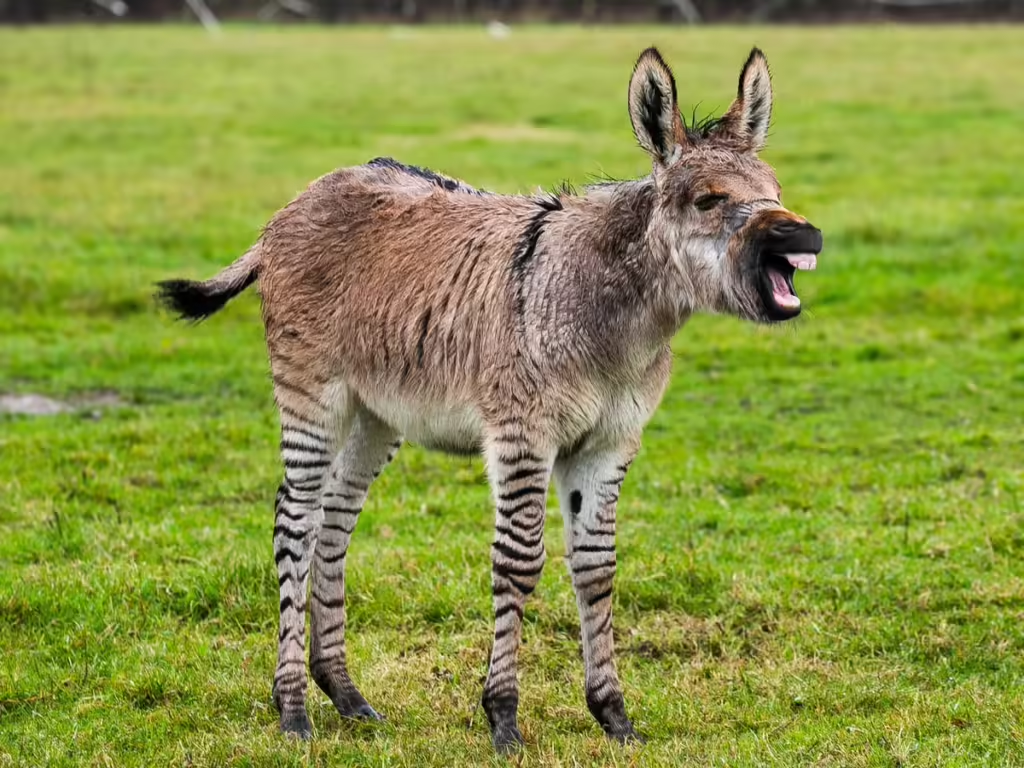
The zonkey is a rare hybrid animal, the offspring of a zebra and a donkey. They typically inherit the stripes of a zebra on the legs and some parts of the body and stand about 4 to 5 feet tall at the shoulder.
- Region of Habitat: Captive breeding programs
- Scientific Name: Equus zebra x Equus asinus
- Place of Origin: Artificially bred in zoos and farms
- Feeding Habits: Herbivore, grass, and foliage
- What Sound They Make: Braying
Fun Facts: Zonkeys, like other hybrid animals, are often sterile and cannot reproduce. They are created through controlled breeding programs and are not found in the wild, making them a unique attraction in zoos.
13. Zorse
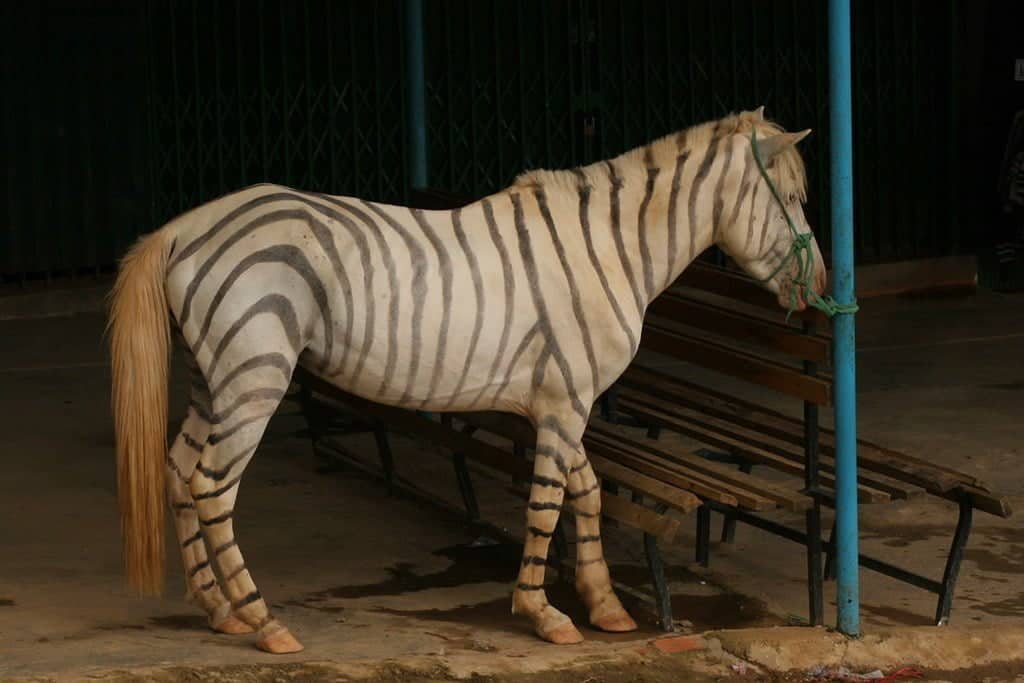
The zorse is a hybrid animal, a cross between a zebra and a horse. It generally inherits the zebra’s stripes on its body and the horse’s build. Zorses can grow up to 5 feet tall at the shoulder and weigh around 600 to 900 pounds.
- Region of Habitat: Captive breeding programs
- Scientific Name: Equus zebra x Equus caballus
- Place of Origin: Artificially bred in zoos and farms
- Feeding Habits: Herbivore, grass, and hay
- What Sound They Make: Neighing
Fun Facts: Zorses are known for their strength and stamina, inheriting the best traits from both parents. However, like zonkeys, they are usually sterile, making them an interesting but non-reproducing species.
14. Zuchon

The Zuchon is a small dog breed, a cross between the Shih Tzu and the Bichon Frise. It typically weighs between 10 and 15 pounds and stands about 9 to 12 inches tall. The Zuchon has a fluffy, hypoallergenic coat that can change color over time.
- Region of Habitat: Domestic environments
- Scientific Name: Canis lupus familiaris
- Place of Origin: United States
- Feeding Habits: Omnivore, commercial dog food, and human-safe foods
- What Sound They Make: Barking
Fun Facts: Zuchons, also known as Teddy Bear dogs, are prized for their affectionate nature and playful demeanor. They make excellent companion animals, especially for families and individuals with allergies.
15. Zorilla

The zorilla, also known as the striped polecat, is a small carnivorous mammal resembling a skunk, with black fur and white stripes. It grows to about 2 feet in length and weighs 1 to 3 pounds.
- Region of Habitat: Southern Africa
- Scientific Name: Ictonyx striatus
- Place of Origin: Africa
- Feeding Habits: Carnivore, rodents, birds, and insects
- What Sound They Make: Growling, hissing
Fun Facts: Zorillas are known for their potent musk, which they can spray as a defense mechanism, similar to skunks. Despite their small size, they are formidable hunters, capable of taking down prey larger than themselves.
16. Zapata Wren
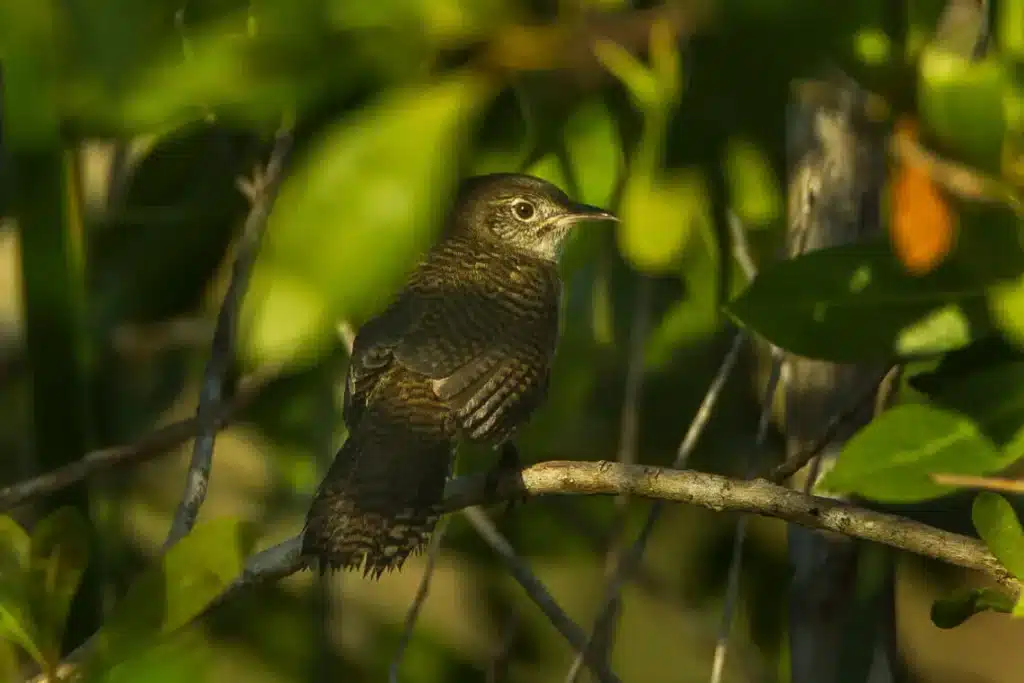
The Zapata wren is a small bird species endemic to the Zapata Swamp in Cuba. It has brownish-grey plumage and measures about 6 inches long, weighing approximately 0.8 ounces.
- Region of Habitat: Zapata Swamp, Cuba
- Scientific Name: Ferminia cerverai
- Place of Origin: Cuba
- Feeding Habits: Insectivore, small insects, and spiders
- What Sound They Make: Melodious trills and whistles
Fun Facts: The Zapata wren is critically endangered and has a very limited range. Conservation efforts are ongoing to protect its habitat from degradation and to prevent its extinction.
17. Zygorhiza
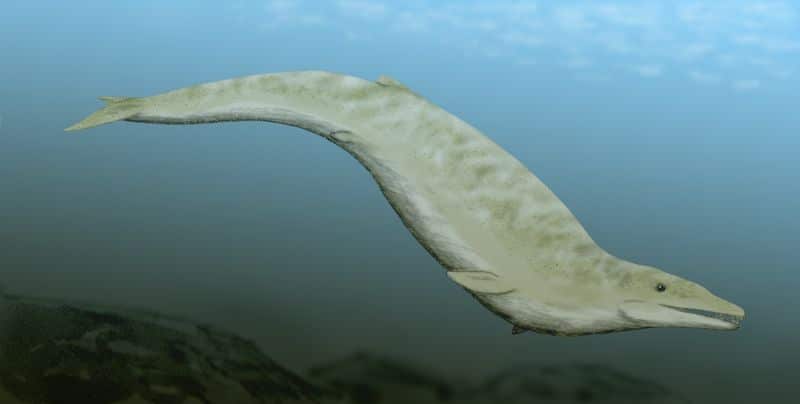
Zygorhiza was a prehistoric whale that lived during the Late Eocene epoch. It was a medium-sized early whale, measuring around 20 feet in length.
Zygorhiza had a streamlined body and long, narrow skull adapted for life in the ocean. It had flippers and a tail fluke similar to modern whales.
- Region of Habitat: North America (Fossil records)
- Scientific Name: Zygorhiza kochii
- Place of Origin: Late Eocene, Gulf Coast region of the USA
- Feeding Habits: Carnivore, fed on fish and squid
- What Sound They Make: Unknown, likely similar to modern whale calls
Fun Facts: Zygorhiza is one of the early ancestors of modern whales, providing insight into the evolution of marine mammals from land-dwelling ancestors.
Fossils of Zygorhiza have been found in Mississippi and Alabama, where they are displayed in several museums.
18. Zanzibar Red Colobus
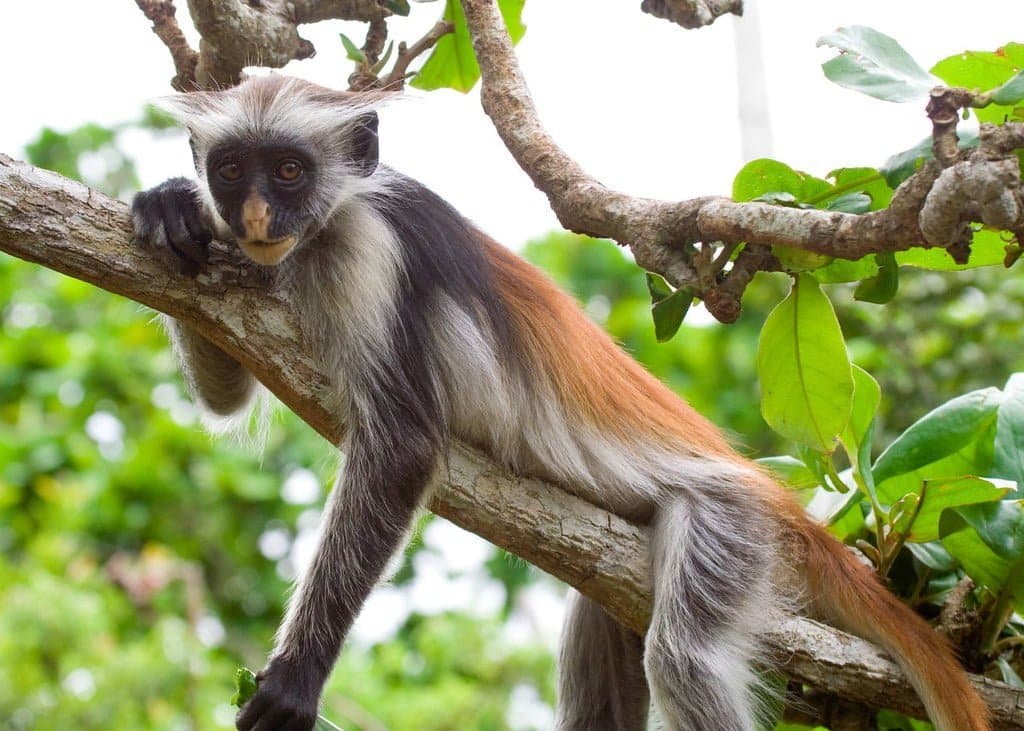
The Zanzibar red colobus is a primate species with a distinctive red back and black face. It typically weighs between 10 and 12 pounds and grows up to 18 inches in length, not including its long tail.
- Region of Habitat: Zanzibar Island, Tanzania
- Scientific Name: Piliocolobus kirkii
- Place of Origin: Zanzibar, Tanzania
- Feeding Habits: Herbivore, leaves, and fruits
- What Sound They Make: Chattering and grunting
Fun Facts: The Zanzibar red colobus is one of the most endangered primates, primarily due to habitat destruction. It is unique to Zanzibar and is an important symbol of the island’s wildlife conservation efforts.
19. Zorapteran

Zorapterans are tiny, wingless insects with a simple body structure. They typically measure about 2 to 3 millimeters in length and are often pale in color, ranging from white to brown.
- Region of Habitat: Tropical and subtropical regions worldwide
- Scientific Name: Zorotypus spp.
- Place of Origin: Various tropical regions
- Feeding Habits: Omnivore, fungi, and small invertebrates
- What Sound They Make: None
Fun Facts: Zorapterans are one of the least known groups of insects, with a simple life cycle and social structure. Despite their simplicity, they play an important role in decomposing organic material in their habitats.
20. Zenaida (Genus)

The Zenaida is a genus of doves characterized by slender bodies and soft cooing sounds. They typically measure 9 to 12 inches in length and weigh 4 to 6 ounces.
- Region of Habitat: Americas, especially in warm regions
- Scientific Name: Zenaida spp.
- Place of Origin: Americas
- Feeding Habits: Omnivore, seeds, and small invertebrates
- What Sound They Make: Soft cooing
Fun Facts: Dogs in the Zenaida genus are known for being monogamous, often staying with the same mate for life. Their gentle cooing is a familiar sound in gardens and parks.
21. Zebra Duiker

The zebra duiker is a small antelope species with reddish-brown fur and distinctive black and white stripes on its back and legs. It typically weighs between 40 and 55 pounds and stands about 16 inches tall at the shoulder.
- Region of Habitat: West African rainforests
- Scientific Name: Cephalophus zebra
- Place of Origin: West Africa
- Feeding Habits: Herbivore, fruits, and leaves
- What Sound They Make: Bleating
Fun Facts: Zebra duikers are adept at guiding dense forests, using their compact bodies to move through thick underbrush.
Their stripes provide camouflage in the dappled light of the forest floor, helping them evade predators.
22. Zorro
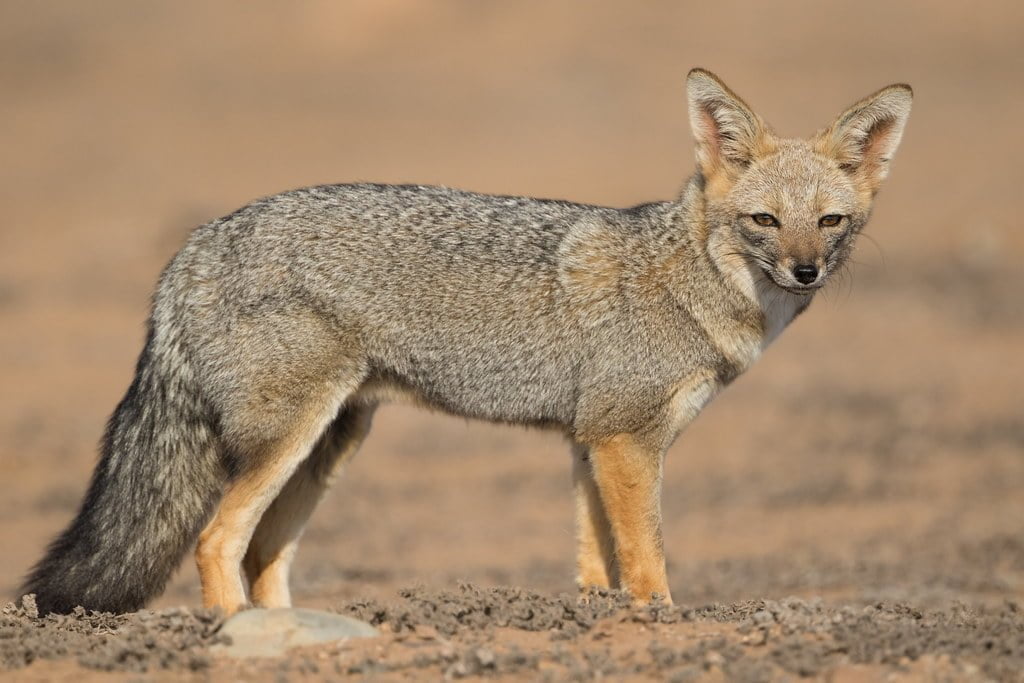
The zorro, also known as the South American fox, is a small carnivorous mammal with a sleek body and bushy tail. It typically weighs 10 to 15 pounds and stands about 12 to 18 inches tall at the shoulder.
- Region of Habitat: South America
- Scientific Name: Lycalopex spp.
- Place of Origin: South America
- Feeding Habits: Carnivore, small mammals, and birds
- What Sound They Make: Barking, yipping
Fun Facts: Zorros are highly adaptable, thriving in various habitats, including forests, grasslands, and deserts. Despite their name, they are not true foxes but belong to a distinct genus of canids native to South America.
23. Zapata Rail
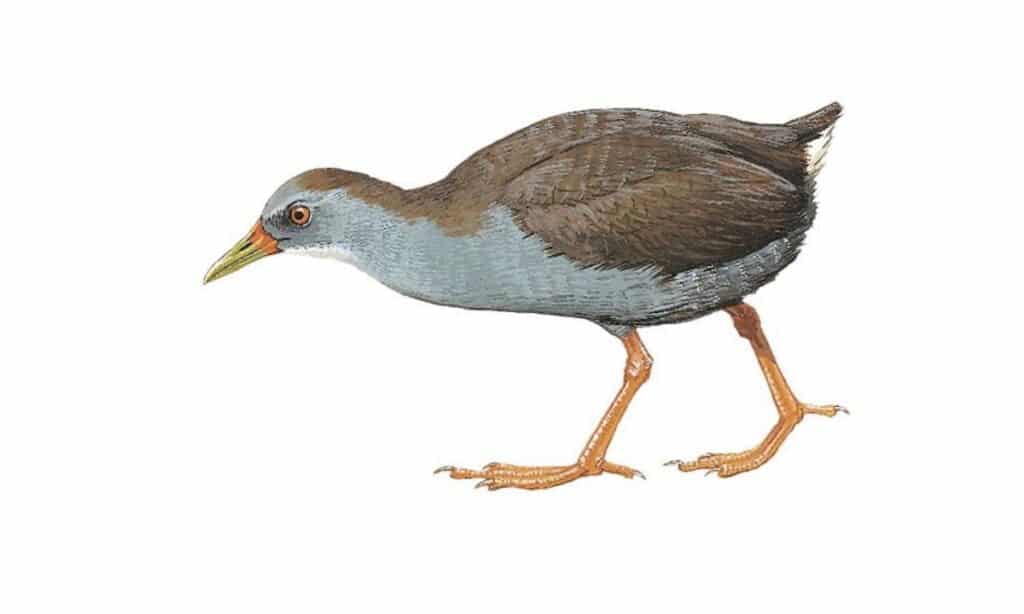
The Zapata rail is a critically endangered bird species with dark plumage and a short tail. It measures about 10 to 12 inches and weighs around 5 to 7 ounces.
- Region of Habitat: Zapata Swamp, Cuba
- Scientific Name: Cyanolimnas cerverai
- Place of Origin: Cuba
- Feeding Habits: Omnivore, insects, and aquatic plants
- What Sound They Make: Harsh calls and grunts
Fun Facts: The Zapata rail is one of the rarest birds in the world. Its range is very limited, confined to the Zapata Swamp. Conservation efforts are crucial to prevent its extinction, as human activities constantly threaten its habitat.
24. Zander
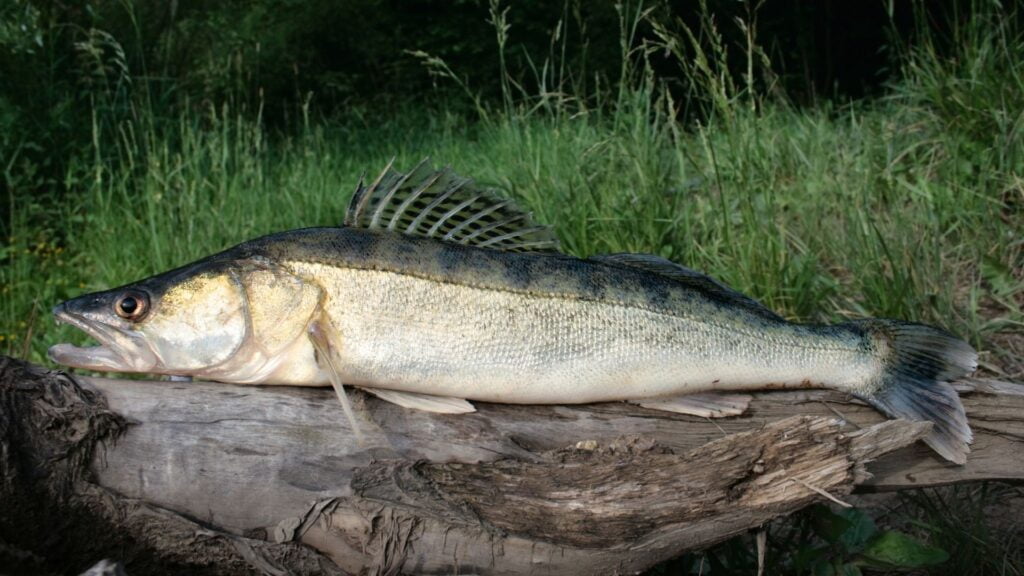
The zander is a large predatory fish with a long, slender body and sharp teeth. It can grow up to 3 feet in length and weigh as much as 20 pounds, making it a formidable hunter in its freshwater habitats.
- Region of Habitat: Europe and Asia, freshwater lakes and rivers
- Scientific Name: Sander Lucioperca
- Place of Origin: Europe and Asia
- Feeding Habits: Carnivore, smaller fish, and aquatic invertebrates
- What Sound They Make: None
Fun Facts: Anglers highly value Zanders for their challenging fight when hooked. They are also a popular food fish in many parts of Europe, known for their firm, white flesh.
25. Zalmoxes

Zalmoxes was a small, herbivorous dinosaur from the Late Cretaceous period. It was about 7 to 10 feet long and weighed around 100 to 200 pounds.
Zalmoxes had a beaked mouth and a sturdy body, adapted for foraging on low-lying vegetation.
- Region of Habitat: Europe (Fossil records)
- Scientific Name: Zalmoxes robustus
- Place of Origin: Late Cretaceous, Romania
- Feeding Habits: Herbivore, fed on plants and leaves
- What Sound They Make: Unknown, possibly soft bleats or grunts
Fun Facts: Zalmoxes is named after a deity from Dacian mythology, reflecting its discovery in Romania.
It was a member of the Rhabdodontidae family, a group of small to medium-sized herbivorous dinosaurs common in Europe during the Late Cretaceous.
26. Zenaida Pigeon

The Zenaida pigeon is a medium-sized bird with a sleek body and soft cooing sounds. It typically measures 9 to 12 inches and weighs 4 to 6 ounces.
- Region of Habitat: Caribbean and Central America
- Scientific Name: Zenaida aurita
- Place of Origin: Caribbean
- Feeding Habits: Omnivore, seeds, and small invertebrates
- What Sound They Make: Soft cooing
Fun Facts: The Zenaida pigeon is named after Princess Zenaide, the niece of Napoleon Bonaparte. They are often seen in pairs or small groups, and their soothing cooing is a common sound in their habitats.
27. Zygomaturus
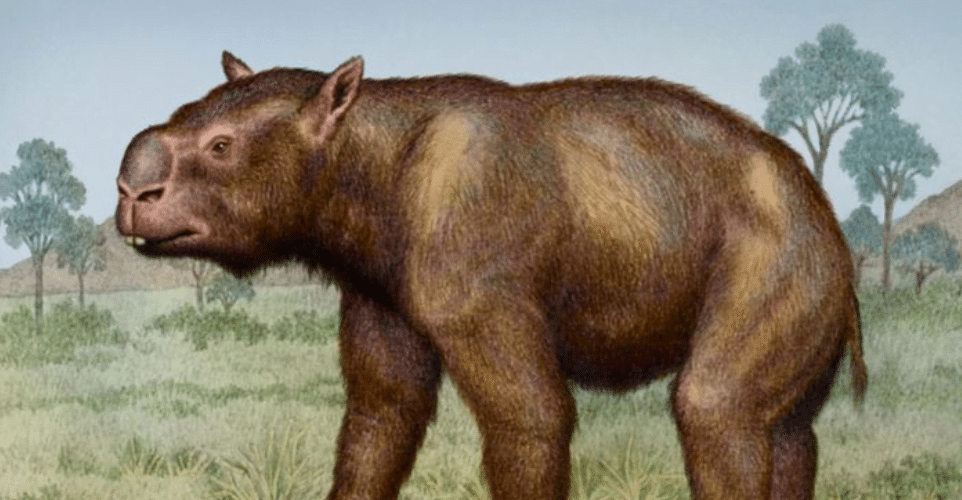
Zygomaturus was a large, herbivorous marsupial that lived during the Pleistocene epoch. It was similar in size to a modern-day cow, standing about 4 to 5 feet tall at the shoulder and weighing up to 1,000 pounds. It had a large, barrel-shaped body and a short, broad head.
- Region of Habitat: Australia (Fossil records)
- Scientific Name: Zygomaturus trilobus
- Place of Origin: Pleistocene, Australia
- Feeding Habits: Herbivore, fed on grasses and vegetation
- What Sound They Make: Unknown, likely low grunts
Fun Facts: Zygomaturus was part of the Australian megafauna and is often compared to the modern-day hippopotamus due to its large size and semi-aquatic lifestyle.
It likely lived in marshy environments and is thought to have been a slow-moving but powerful animal.
28. Ziapelta
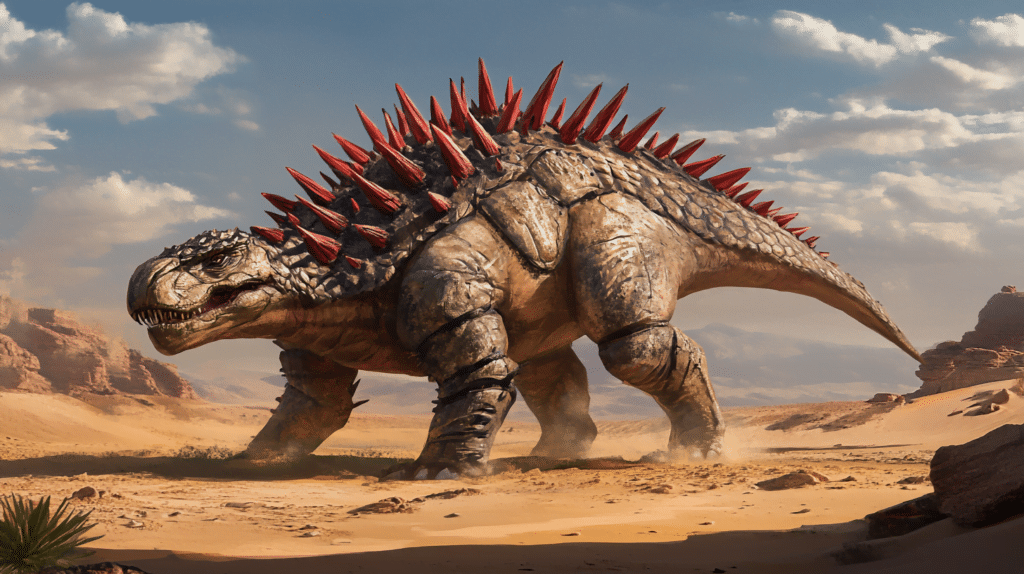
Ziapelta was an armored dinosaur, part of the ankylosaur family, known for its bony armor and clubbed tail.
It lived during the Late Cretaceous period and measured about 15 to 20 feet in length, weighing around 2 tons. Ziapelta had a broad, low body covered with bony plates and spikes.
- Region of Habitat: North America (Fossil records)
- Scientific Name: Ziapelta sanjuanensis
- Place of Origin: Late Cretaceous, New Mexico, USA
- Feeding Habits: Herbivore, fed on low-lying plants
- What Sound They Make: Unknown, possibly low grunts or growls
Fun Facts: Ziapelta was discovered relatively recently, in 2014, and its name reflects its discovery location near the Zia Pueblo in New Mexico.
It adds to the diversity of ankylosaurs known from North America, highlighting the complexity of Late Cretaceous ecosystems.
29. Zigzag Heron
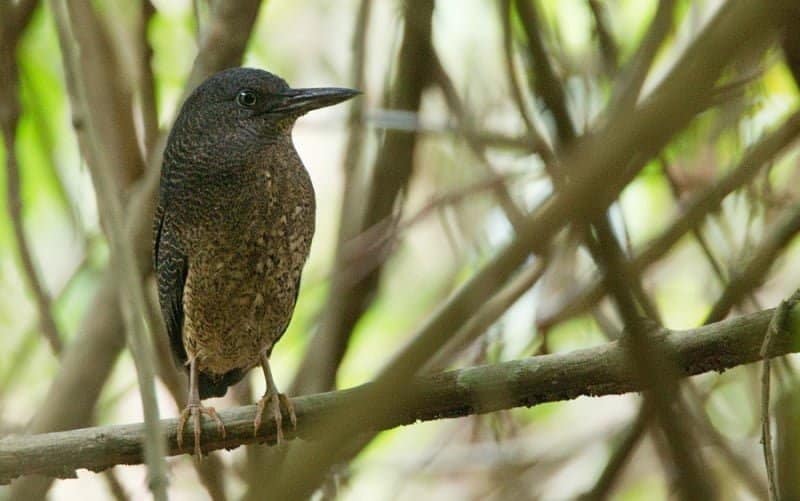
The zigzag heron is a small, secretive bird species with a dark body and white streaks on its wings. It typically measures around 14 to 16 inches and weighs about 7 to 10 ounces.
- Region of Habitat: South America, particularly in dense forests
- Scientific Name: Zebrilus undulatus
- Place of Origin: South America
- Feeding Habits: Carnivore, fish, and small aquatic animals
- What Sound They Make: Soft croaking
Fun Facts: The zigzag heron is rarely seen due to its secretive nature and preference for dense forest habitats. It is most active during dawn and dusk when it hunts for fish and other small prey.
30. Zebra Butterfly

The zebra butterfly is a medium-sized species with long wings and distinctive black and white stripes. It typically has a wingspan of about 3 to 4 inches and is known for its slow, graceful flight.
- Region of Habitat: Central and South America, southern United States
- Scientific Name: Heliconius charithonia
- Place of Origin: Central and South America
- Feeding Habits: Herbivore, nectar from flowers
- What Sound They Make: None
Fun Facts: Zebra butterflies are known for their unique roosting behavior in large groups at night. They are also the state butterfly of Florida, recognized for their tender beauty and important role in pollination.
31. Zebu Ox
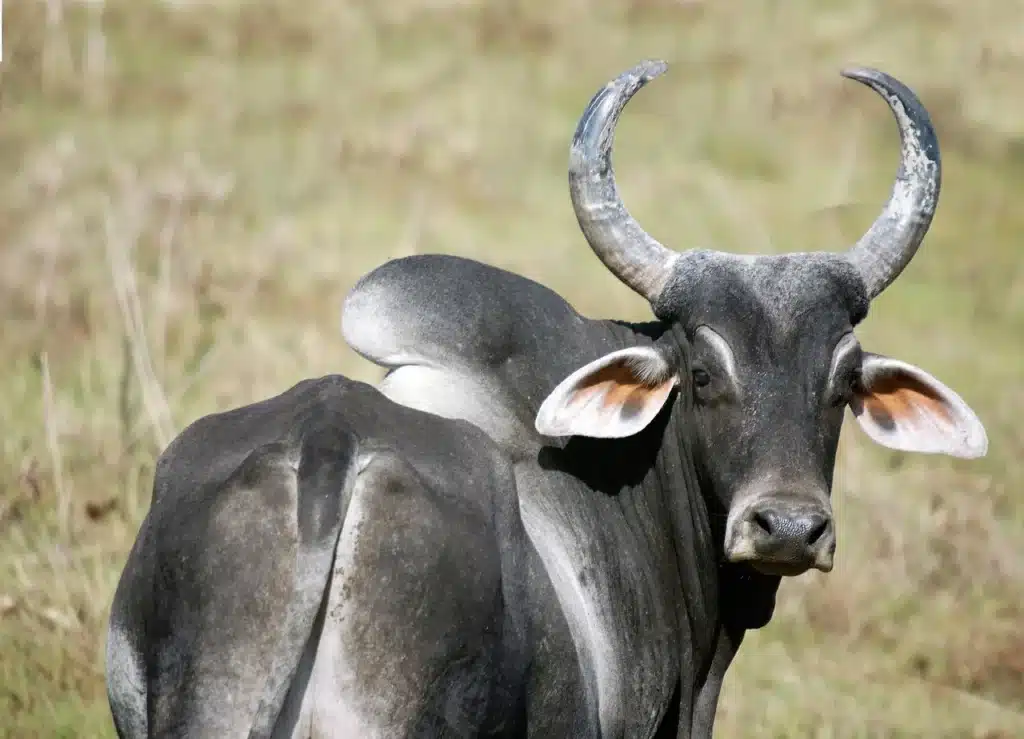
The zebu ox is a domesticated ox species with a prominent hump on its shoulders and large, drooping ears. They can weigh 600 to 1,000 pounds and stand about 4 to 5 feet tall at the shoulder.
- Region of Habitat: Indian subcontinent and Africa
- Scientific Name: Bos taurus indicus
- Place of Origin: Indian subcontinent
- Feeding Habits: Herbivore, grass, and foliage
- What Sound They Make: Mooing
Fun Facts: Zebu oxen are often used as draft animals in agriculture, particularly in hot climates where they are well-adapted. They are also revered in many cultures for their strength and endurance.
44. Zhuchengtyrannus

Zhuchengtyrannus was a large, carnivorous dinosaur similar to the Tyrannosaurus rex.
It lived during the Late Cretaceous period and measured about 30 to 40 feet in length, weighing several tons. It had powerful jaws and sharp teeth, making it a formidable predator.
- Region of Habitat: Asia (Fossil records)
- Scientific Name: Zhuchengtyrannus magnus
- Place of Origin: Late Cretaceous, China
- Feeding Habits: Carnivore, likely fed on large dinosaurs
- What Sound They Make: Unknown, possibly deep roars
Fun Facts: Zhuchengtyrannus was discovered in China and is one of the largest tyrannosaurid dinosaurs known.
Its discovery has helped scientists better understand the diversity of large predators during the Cretaceous in Asia.
33. Zambezi Flapshell Turtle
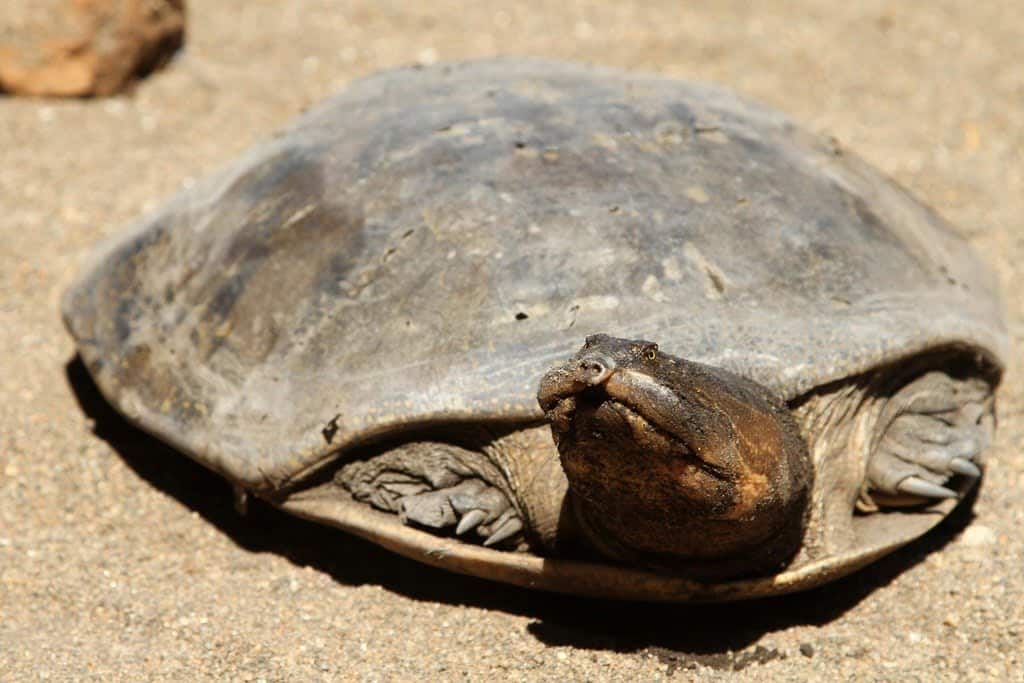
The Zambezi flap-shell turtle is a freshwater species with a soft, leathery shell and a broad, flat body. It typically measures 12 to 16 inches and weighs 15 to 20 pounds.
- Region of Habitat: Southern Africa, Zambezi River Basin
- Scientific Name: Cyclanorbis elegans
- Place of Origin: Africa
- Feeding Habits: Omnivore, fish, and aquatic plants
- What Sound They Make: None
Fun Facts: The Zambezi flap-shell turtle is well-adapted to aquatic life. Its webbed feet and streamlined body allow it to move efficiently in water. They bury themselves in mud to escape predators and harsh environmental conditions.
34. Zorro Bat
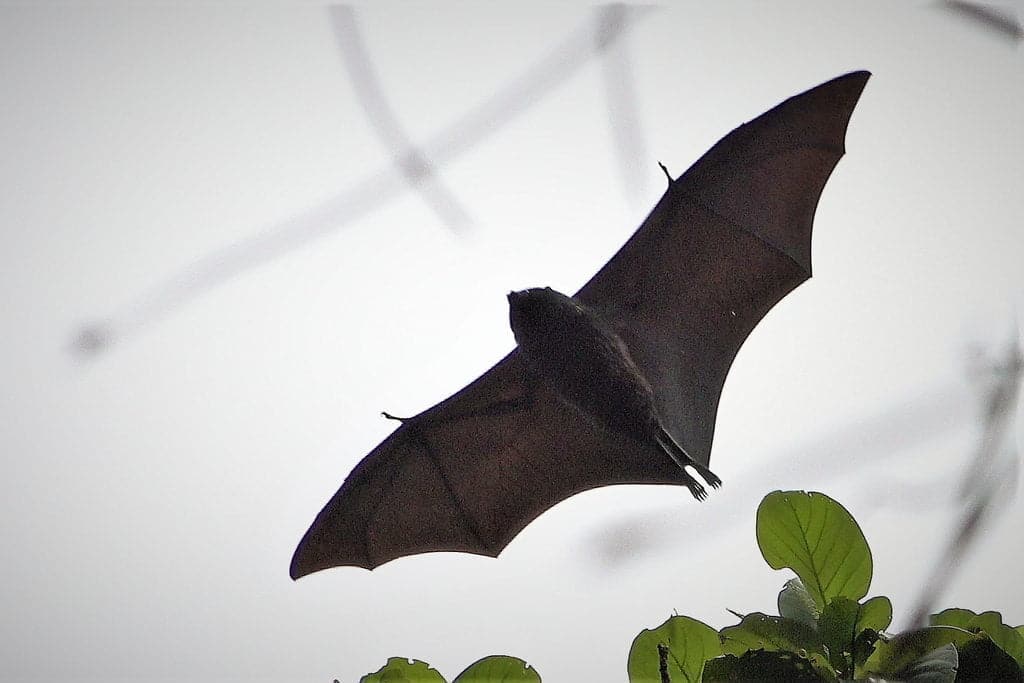
The Zorro bat is a small bat species with large ears and a distinct nose-leaf structure. It typically weighs 1 to 2 ounces and has a wingspan of about 12 to 15 inches.
- Region of Habitat: Central and South America
- Scientific Name: Micronycteris spp.
- Place of Origin: Central and South America
- Feeding Habits: Insectivore, small insects, and fruits
- What Sound They Make: High-pitched echolocation calls
Fun Facts: Zorro bats use echolocation to movee and hunt for prey in complete darkness. They are named for their stealthy behavior, often going unnoticed as they hunt for insects in the night sky.
35. Zebra Caterpillar
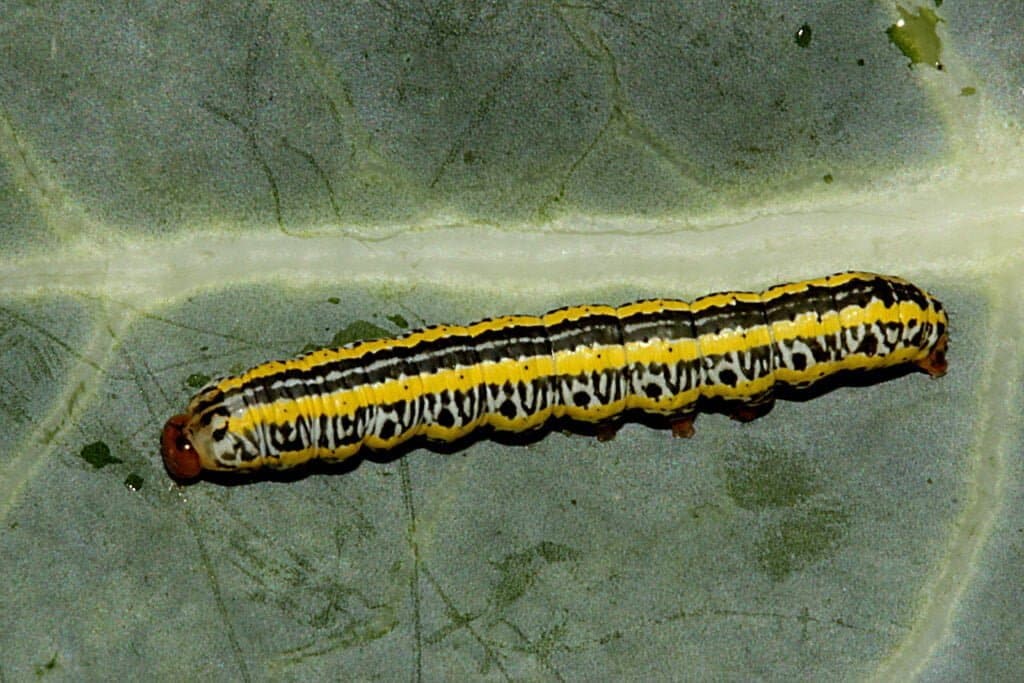
The zebra caterpillar is a larval stage of a moth species characterized by a black body with white and yellow stripes. It typically measures 1.5 to 2 inches long and is known for its voracious appetite.
- Region of Habitat: North America
- Scientific Name: Melanchra picta
- Place of Origin: North America
- Feeding Habits: Herbivore, leaves of various plants
- What Sound They Make: None
Fun Facts: Zebra caterpillars are known to be pests in gardens and agricultural fields, as they can cause significant damage to crops. Despite their destructive tendencies, they eventually transform into harmless moths with a striking appearance.
36. Zebra Swallowtail Butterfly
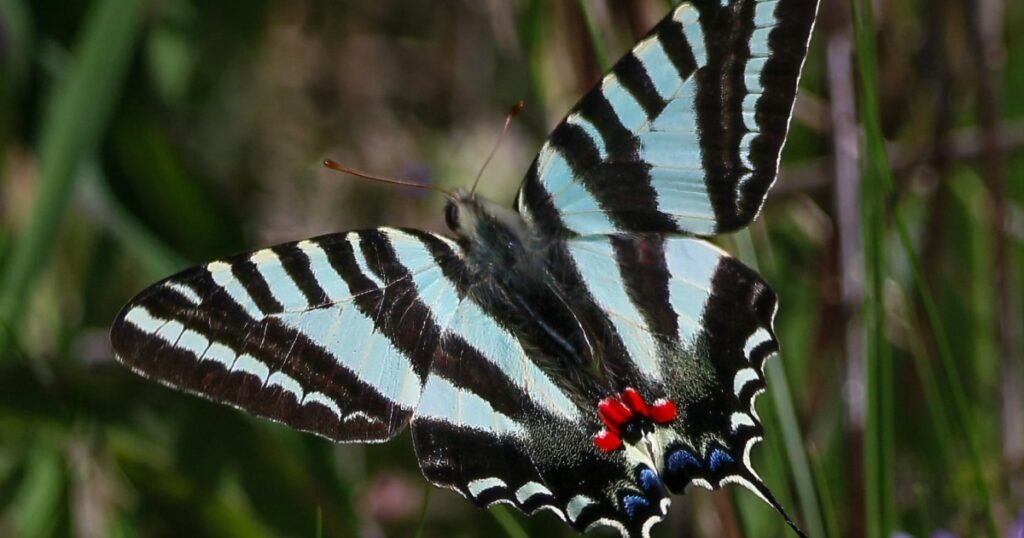
The zebra swallowtail butterfly is a large species with long, triangular wings and black and white stripes. It typically has a wingspan of about 2.5 to 4 inches and is known for its graceful flight.
- Region of Habitat: Eastern United States
- Scientific Name: Eurytides marcellus
- Place of Origin: United States
- Feeding Habits: Herbivore, nectar from flowers
- What Sound They Make: None
Fun Facts: The zebra swallowtail butterfly is named for its distinct wing shape, which resembles a swallow’s tail. It is particularly fond of pawpaw trees, where it lays its eggs and the caterpillars feed on the leaves.
37. Zonotrichia (Sparrow Genus)
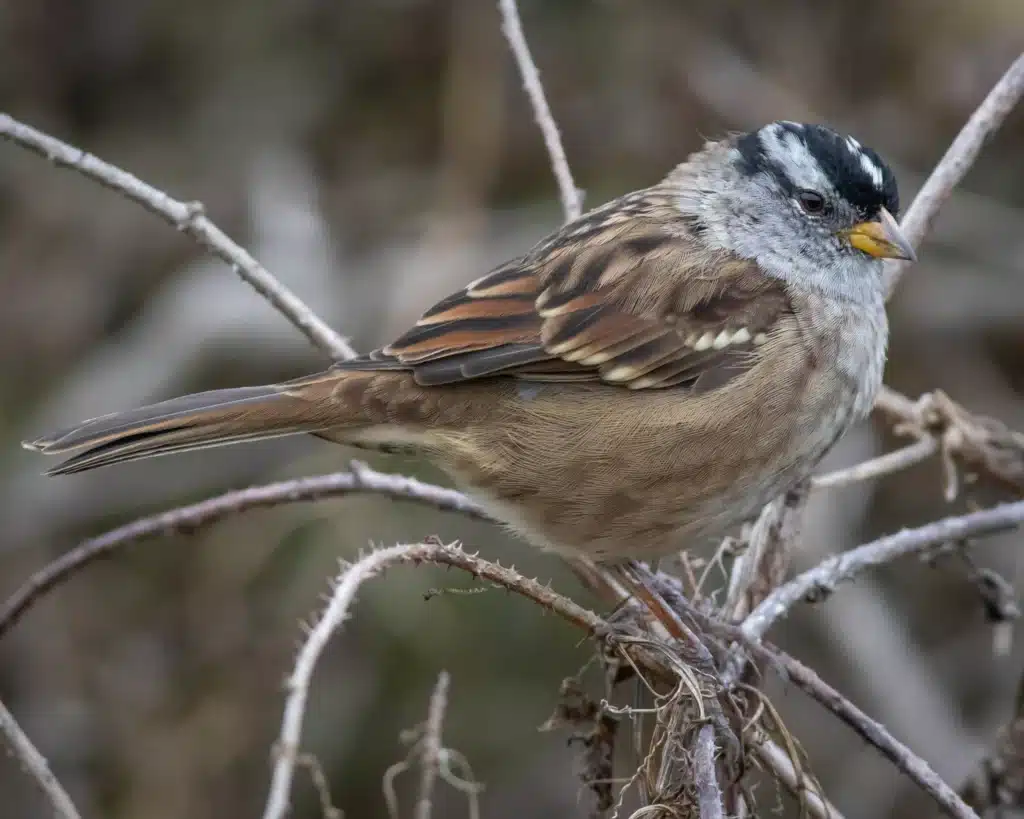
Zonotrichia is a genus of sparrows known for its distinctive white-striped heads and melodic songs. Its birds typically measure 6 to 7 inches long and weigh about 1 ounce.
- Region of Habitat: Americas, particularly in temperate regions
- Scientific Name: Zonotrichia spp.
- Place of Origin: Americas
- Feeding Habits: Omnivore, seeds, and insects
- What Sound They Make: Melodious singing
Fun Facts: Sparrows of the Zonotrichia genus are known for their migratory behavior, traveling long distances between their breeding and wintering grounds.
Their songs are often complex and vary between regions, making them a favorite among birdwatchers.
38. Zephyrosaurus

Zephyrosaurus was a small, bipedal dinosaur that lived during the Early Cretaceous period. It had a slender build, with an estimated length of around 6 feet and a weight of approximately 50 to 100 pounds.
Its appearance was characterized by a long tail, small head, and sharp beak, suggesting it was an herbivore.
- Region of Habitat: North America (Fossil records)
- Scientific Name: Zephyrosaurus schaffi
- Place of Origin: Early Cretaceous, North America
- Feeding Habits: Herbivore, likely fed on plants and leaves
- What Sound They Make: Unknown
Fun Facts: Zephyrosaurus is known from limited fossil remains, making it one of the lesser-known dinosaurs. Its name means “west wind lizard,” reflecting its discovery in the western United States.
39. Zapata Sparrow
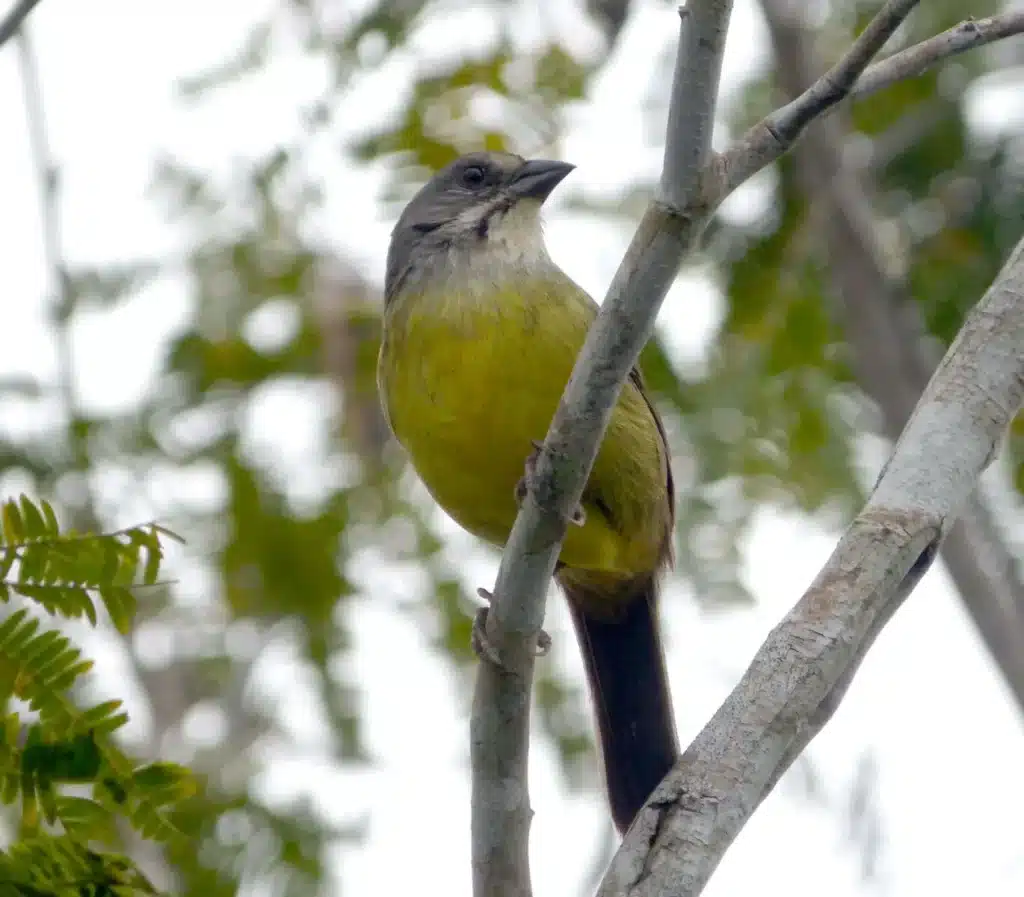
The Zapata sparrow is a small bird species endemic to the Zapata Swamp in Cuba. It has brownish-grey plumage and measures about 6 inches long, weighing approximately 0.8 ounces.
- Region of Habitat: Zapata Swamp, Cuba
- Scientific Name: Torreornis inexpectata
- Place of Origin: Cuba
- Feeding Habits: Omnivore, seeds, and small invertebrates
- What Sound They Make: Soft chirping
Fun Facts: The Zapata sparrow is critically endangered, with a very limited range. Conservation efforts are ongoing to protect its habitat from degradation and to prevent its extinction.
40. Zalambdalestes

Zalambdalestes was a small, shrew-like mammal that lived during the Late Cretaceous period. It was about 6 inches long and weighed less than a pound. Its long snout and sharp teeth indicated that it was an insectivore.
- Region of Habitat: Asia (Fossil records)
- Scientific Name: Zalambdalestes lechei
- Place of Origin: Late Cretaceous, Mongolia
- Feeding Habits: Insectivore, primarily fed on insects
- What Sound They Make: Likely high-pitched squeaks
Fun Facts: Zalambdalestes is an example of an early placental mammal, providing insight into mammals’ evolution during the age of the dinosaurs. Its deft body suggests it was proficient at burrowing and hunting small prey.
Summing It Up!
Our trip through the world of animals that start with Z has ended. We’ve seen many creatures, from the tiny zorapteran to large zebras. Each of these animals has its special place in nature.
Learning about these Z-named animals shows us how rich and varied our planet’s wildlife is. It reminds us that there’s always more to know about the natural world.
What can you do with this new knowledge? Share it with friends and family. Use it to spark your interest in animal protection. Or enjoy knowing more about the world around you.
Remember, every animal plays a part in its ecosystem. By learning about animals that start with Z, we’ve taken a small step toward understanding and valuing all life on Earth.
What animal on this list caught your eye? Let us know in the comments!

